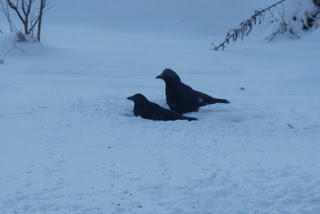Last November I attended a local update by the Regional Forest Health Network that included a presentation on the poor health and die-back of aspens. I had indeed noticed that on the back of our woodlot, where we have a very formidable stand of poplars, many of the trees but not all are dying. Characteristically what happens is that the trees break in the trunk around mid height. This picture shows a typical example of this damage.
I recently came across a booklet on Forest Threats that was prepared by The Canadian Forest Service almost 30 years ago. In it they describe
Hypoxylon Canker of Aspen [Hypoxylon pruinatum]. Using that lead, I then found some excellent material on the internet and noted that the scientific name has changed a bit. It is now better or more popularly know as [
Hypoxylon mammatum]. I suspect that this is what's affecting our poplars. I am not too concerned about this loss since I never saw a large market for poplars, although I will say we have many towering giants reach well over 20 metres (60 ft.) in height. Poplar is a pioneer species meaning it is usually grows first in an opening typically preparing the soil by its own decay, for next generation and usually higher quality trees like oaks and other hardwoods.
This die back does cause a couple of problems. One is that the opening up of the canopy will release the buckthorn in the understory. For example all the brush in the foreground of this picture is Glossy Buckthorn - a very invasive and moderately shade-tolerant shrub from Europe, and no doubt this invasive will take off as soon as there is more light.
Another problem is the danger of the tops of the towering trees, often called widow makers in forestry parlance, from falling and becoming a hazard to persons below and especially if cutting the trees or moving them in anyway.





























